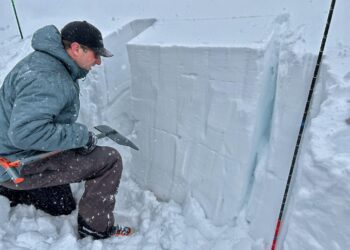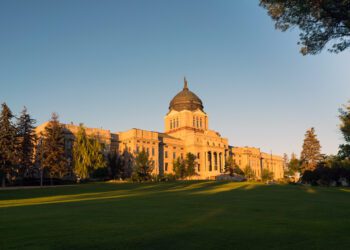By Paul Swenson EBS COLUMNIST
Have you ever noticed that snow in the yard, on a pine bough or a roof, seems to slowly disappear over a few days or weeks even when the temperature never gets above freezing? Or that icicles seem to diminish in size even without melting? Or that the frost on your windshield goes away as soon as the sun shines on the glass, even at negative 20 degrees? It seems the snow just vanishes into thin air.
That of course is the key, thin air, especially if it has low humidity.

Water is one of a few substances that can change from its solid state, ice or snow, into its gaseous state, water vapor, without transitioning through its liquid state. Two other common solids that do this are carbon dioxide, which is why it’s called “dry ice,” and Naphthalene, better known as “moth balls.” The process of going from solid to gas states is called sublimation.
To sublimate ice, energy needs to be provided to the system usually in the form of sunlight. To calculate the amount needed is a basic problem found in a physics or chemistry class. Start with the cold ice, heat it to its melting point, melt it, raise the temperature of the now water to its boiling point, then boil it. Each phase transition takes a lot of energy—for the frost crystal shown above, I calculate that it takes about 20 Joules of energy. Given that sunlight provides about 1 milliwatt per square centimeter of energy, it should take about an hour and thirty minutes for this frost crystal to sublimate away.
So where does the water go? Into the air just off the glass’ surface, then disperses into the garage, increasing the humidity in the garage until the next cold night.
This process can be seen out in the field as well. On calm, cold, sunny days, the sparkling snow seen in the early morning loses its sparkle over the course of the sunny day as the frost crystals sublimate away. The resulting water vapor stays close to the ground if there is no wind, and when the sun sets, the opposite process occurs.
After dark, radiative heat loss causes the snowy surface to cool off until it is colder than the air above it. The water vapor condenses directly into its solid state on the ground—a process known as deposition. On cold, clear, calm nights, with just a slight downslope movement of air, very large ice crystals can grow, sometimes topping and inch or two in length. This is known as hoar frost.

This cycle of sublimation and deposition can occur day after day for as long as the weather stays in a high-pressure cycle, like the Big Sky region experienced for weeks at the beginning of winter. Very thick layers of hoar frost can build, which is a wintertime dream, but also a nightmare. The hoar frost is so pretty to hike through, sparkling like fields of diamonds, but the crystals trap a lot of air between them when new snow falls on top. The large, fragile behavior of the hoar frost and its trapped air leads to a structurally weak layer in the snowpack.
One only has to look at the avalanche reports provided to the public by the Gallatin National Forest Avalanche Center and watch their snowpack analysis videos to see the results of buried hoar frost layers in the snowpack. If you are a backcountry enthusiast, please check the avalanche reports provided, especially as we get more frequent and larger snowstorms in the following weeks leading into spring.
The beauty of a cold crisp winter morning has been the sublime inspiration for many. As Robert Lewis Stevenson wrote in Winter Time:
“Black are my steps on silver sod;
Thick blows my frosty breath abroad;
And tree and house, and hill and lake,
Are frosted like a wedding cake.”
Paul Swenson has been living in and around the Big Sky area since 1966. He is a retired science teacher, fishing guide, Yellowstone guide and naturalist. Also an artist and photographer, Swenson focuses on the intricacies found in nature.











